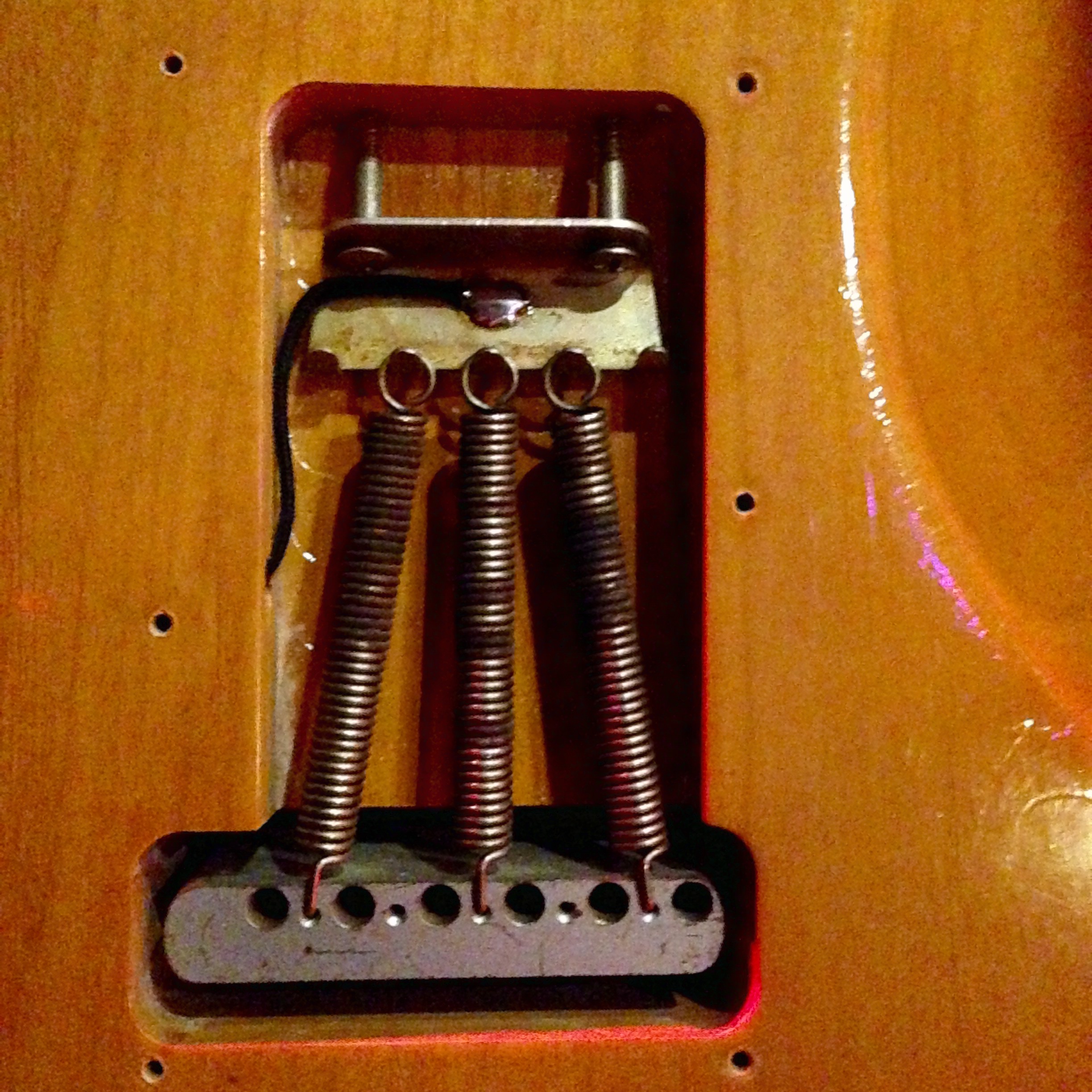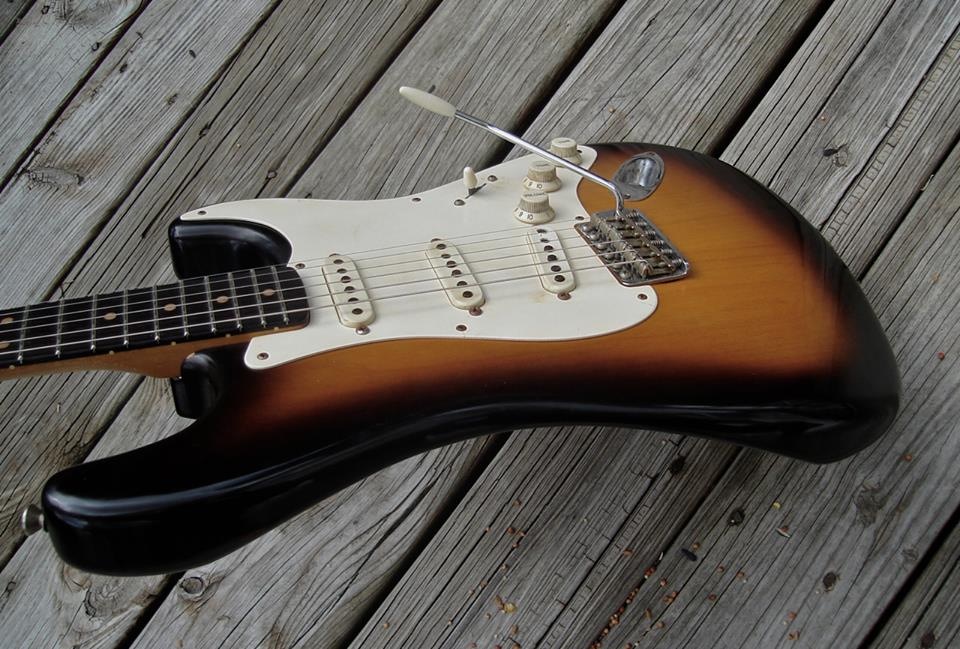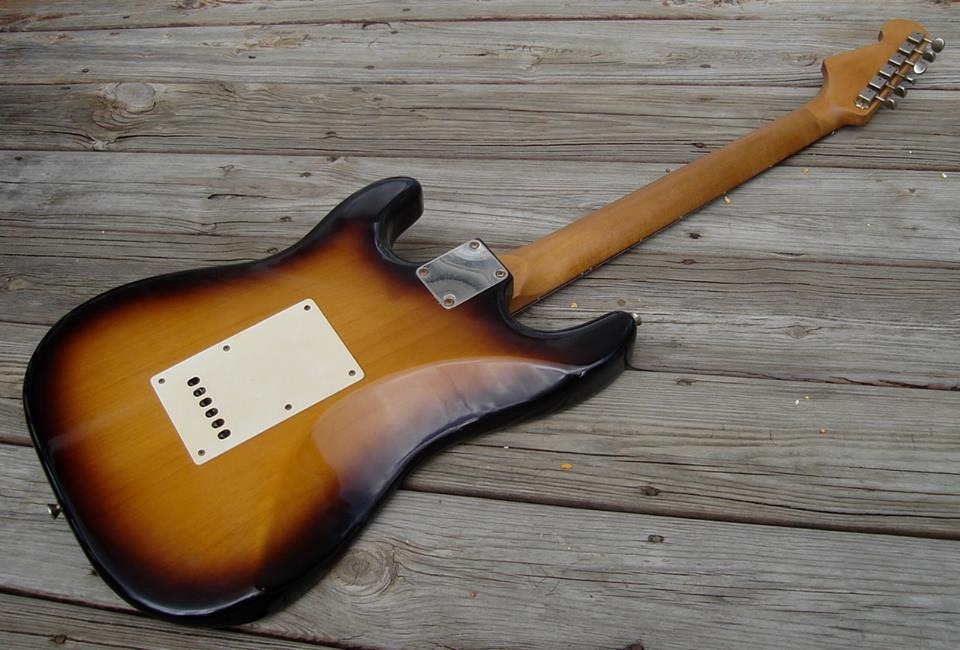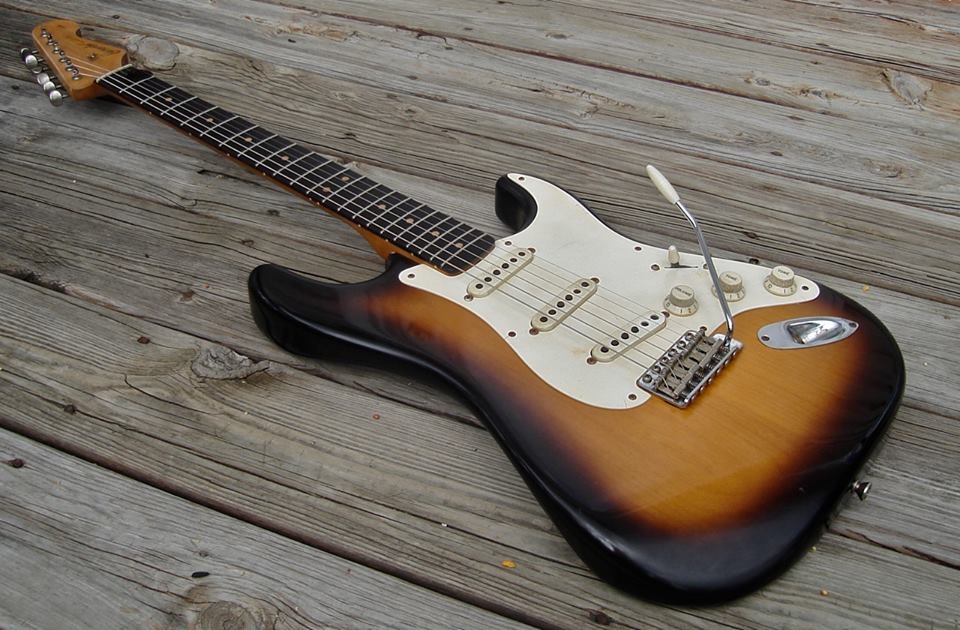Hello Gearheads! It's time for another segment of Tone Tools, and today I'd like to talk about one of the most vital pieces of the tonal puzzle in my world, as well as many other guitarists. It's the first effect many guitarists will find at there fingertips and might not even know it... what is this magical, mysterious and apparently invisible pedal!??? Well, it's not a pedal it's on your guitar and it's called a volume knob or volume pot (short for potentiometer). If you are not familiar with the eccentricities of the usage of the volume pot, you might only see this as a useless knob that either you turn all the way up to be heard or have to make sure it's not turned all the way down when you strike that big open cord of nothingness.... yes that has happened to me before! At the end of the day, the guitar's volume pot is an incredible tool for tone and if you haven't adventured much into those depths, I highly encourage it. So, without further ado, I'll get into why it's so great and important to my technique.
The guitar's volume pot is the first place in the signal path to effect dynamics, tone and volume. Depending upon the type of volume pot or whether or not there are any tricks (I'll get to that later) done to modify the way the pot works, it can yield a myriad of tones just by adjusting the volume of the input while you play. You can essentially dynamically adjust the timbre of the voice of the guitar by just moving the pot up or down a little bit. This is easily the simplest thing to try, well, right now! If you own an electric, go and grab your guitar and play along...
You might be asking yourself, "Ok, well all you've told me is how the volume pot makes it louder or softer... what gives!?" You'd be right if that were all it did. What really makes the volume pot an incredible tone tool is how it interacts with pedals and amplifiers -- specifically when the amplifiers are overdriven or you're using pedals that introduce gain and/or distortion. The pinnacle of this ideology is the Fuzz Face, an incredibly simple circuit but one that responds dramatically to the use of the volume pot. With just a Fuzz Face style pedal you can get any shade of sparkling clean tones, light overdriven tones, all the way to the full-tilt fuzz roar we all love. It's interaction at it's finest. Much of what Jimi Hendrix was doing live and in the studio was accomplished by this method. I mean, it makes complete sense... Jimi didn't have every effect under the sun to tickle his fancy! He had to make and create landscapes of sound with what he had at his fingertips. The volume pot is a hero in these moments. If you, the player, can allow yourself to be married to this notion of motion and balance between the tone, sound and volume... major yields will be rewarded.
I find the volume pot and this technique most useful on the stage. I'm mostly trying to do as little as possible with my body other than stand up right, not fall down and give an incredible performance. Having to hit 5 different pedals to catch a part along with singing and then hitting another jump above everyone in the mix to solo.... it's all just too much. The volume pot is my best friend in this scenario. I'm mostly able to use just a few pedals without having to switch a bunch of things on or off constantly, and get ALL the tones I need from dynamically shifting them with the volume pot. It's important to pick pedals that respond well to this technique and there are many on the market that do. One of my favorites is the Maxon SD-9. It's a weird little (and most of the time nasty sounding) distortion box... but when you tame it, it's like nothing else. I've scoured the effects world trying to find a better SD-9 and still have not been successful. It reacts very much like an amplifier: round and sparkly clean tone with the volume pot low, then it very smoothly and evenly moves up the gain and EQ range as you move that pot up. It's a pedal that when I'm playing live is almost always on. This allows me to stay away from my pedalboard and stop thinking about which box I have to step on next. Once you fall for this technique it becomes quite impossible to go back to just thinking of that pot as either on or off. There's so much beauty in that middle ground. Another pedal that works really well for this technique is the the Xact Tone Solutions Winford Drive. Based on a heavily modified RAT pedal, and capable of practically every type of gain tone available, the clean roll-off is very good here too. I used just the Winford Drive in a production of "One Man, Two Guvnors" where I was wireless and had to be away from my pedals and gear at all times, but still had to get sounds that were clean all the way to 60's style fuzz. I couldn't have accomplished any of this without this approach.
Now, onto the tricks I mentioned previously. There are a few things that can be done to make the this technique work the best it can.
Firstly, without any modifications the sound of "Rolling Off" your volume pot can make the tone sound a little dull and less brilliant. A common modification to fix this is called a Treble Bleed. It's essentially the addition of a capacitor in the circuit of the volume pot to allow the treble frequencies to "bleed" through as you roll down the pot. There are different values that you can use and it's most common to pick a value that sounds the most natural to the full sweep of the pot. This is common on Fender guitars, especially Stratocasters. I have this installed on both my Danocaster Double Cut and my custom Montuoro Hollowbody. The Treble Bleed has been an integral piece of this puzzle. With it installed I can achieve realistic and sparkly clean tones all the way up the gain range. For more information of the Treble Bleed circuit take a look at this article from Fender: https://www.fender.com/articles/tech-talk/how-a-treble-bleed-circuit-can-affect-your-tone
Another trick is often used on Gibson guitars and more specifically the Les Paul. It's called 50's Wiring and while it isn't as drastic as the Treble Bleed explained above, it still allows for a clearer less dull tone as you move the volume pot down. The 50's wiring vs the modern wiring on a Les Paul allows for a clearer voice but loses a little overall volume, which was the purpose of creating the modern type of wiring to allow for even volume distribution regardless of where the volume pot is set. For more information on 50's wiring and how it's accomplished, check out this article from Seymour Duncan: http://www.seymourduncan.com/blog/tips-and-tricks/lespaulwiring
The final trick to getting the most out the volume pot Roll-Off technique is pretty simple and obvious. A volume pedal! Regardless of what type of guitar, effects, and/or modifications you might have going on, as you roll off that volume you might experience some actual volume loss. To solve this I simply use a volume pedal in my systems. It's important where you put the volume pedal - if you put it before the other pedals it will just act like another volume pot on your guitar. I put it after all the gain pedals and before any delay, reverb or modulation. This way, the volume pedal acts like a master volume for the entire rig. You can essentially get realistic overdrive and distortion tones at any volume with the volume pedal in that spot on a pedalboard. It's incredibly helpful and useful. Combining that with the rolling off of the volume pot on your guitar and you've got any shade you will need tonally right at your fingertips. It's the most interactive way to manipulate my tone in a live environment I've found, and I couldn't perform without it.
All in all, using this technique is about exploring the depths of what lies deep in the instruments we play. In a world where you can buy any effect to make practically any sound you want or sometimes sounds no one wants... it's a cherished tool to me to be able to control the guitar as best as I can. I highly suggest you try to open this door to greater control over the instrument as it's yield is incredibly rewarding and it will ultimately allow you to connect with the song, band and audience, better than ever.



























